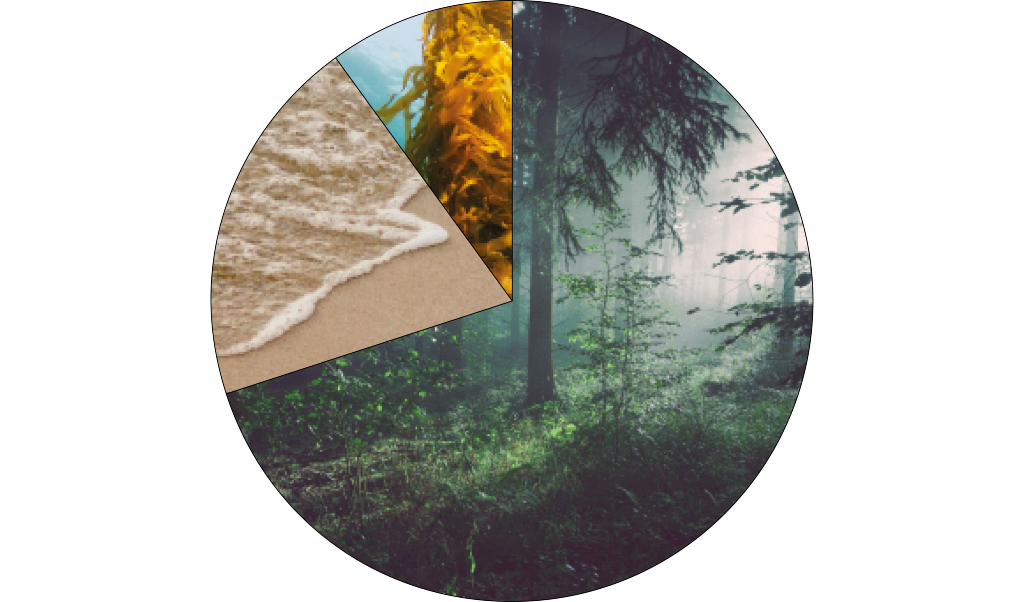ENHANCED WEATHERING 20%
Enhanced weathering is a nature-based carbon removal solution that enhances CO2 absorption by the ocean. When applying olivine-containing rock onto coastlines, it dissolves in seawater, which increases ocean’s CO2 uptake.
- High permanence
- High additionality
Weathering refers to the breakdown and dissolution of rocks and minerals on Earth’s surface. In the process, CO2 is removed from the atmosphere and is incorporated into carbonates. Enhanced weathering involves artificially speeding up this process by adding pulverised silicate rocks to different ecosystems: (1) Dispersed onto agroecosystems, react with carbonic acid (CO2 dissolved in rain water) to form carbonates. (2) Directly spread on beaches or on the sea surface, where wave action drives it into the oceans. There, the rock particles react with hydrogen ions, altering the ocean’s chemistry and enabling it to absorb more CO2 from the atmosphere. (3) Due to their beautiful appearance silicate rocks can also be used in landscaping.
Co-benefits
The utilization of silicate rocks in enhanced weathering (EW) leads to several positive impacts. When used in farming, the supply of these minerals back into soils improves crop health and provides protection against pests and diseases. This results in a reduction in the usage of fertilizers and pesticides, and hence, it reduces food production cost and contributes to food security. EW also counteracts one of our greatest environmental problems: ocean acidification. Moreover, EW provides the carbonates necessary for the survival and proliferation of shellfish, corals, and some plankton specie.





